Charming Weasels, Tranquil Deer
Franz Marc made animals the stars of his best paintings, two of which are now on display in D.C.
(It should take four minutes to read this weekend’s essay, which runs to about 720 words. There are links for sources at the end. Thank you for your time spent with Snack.)
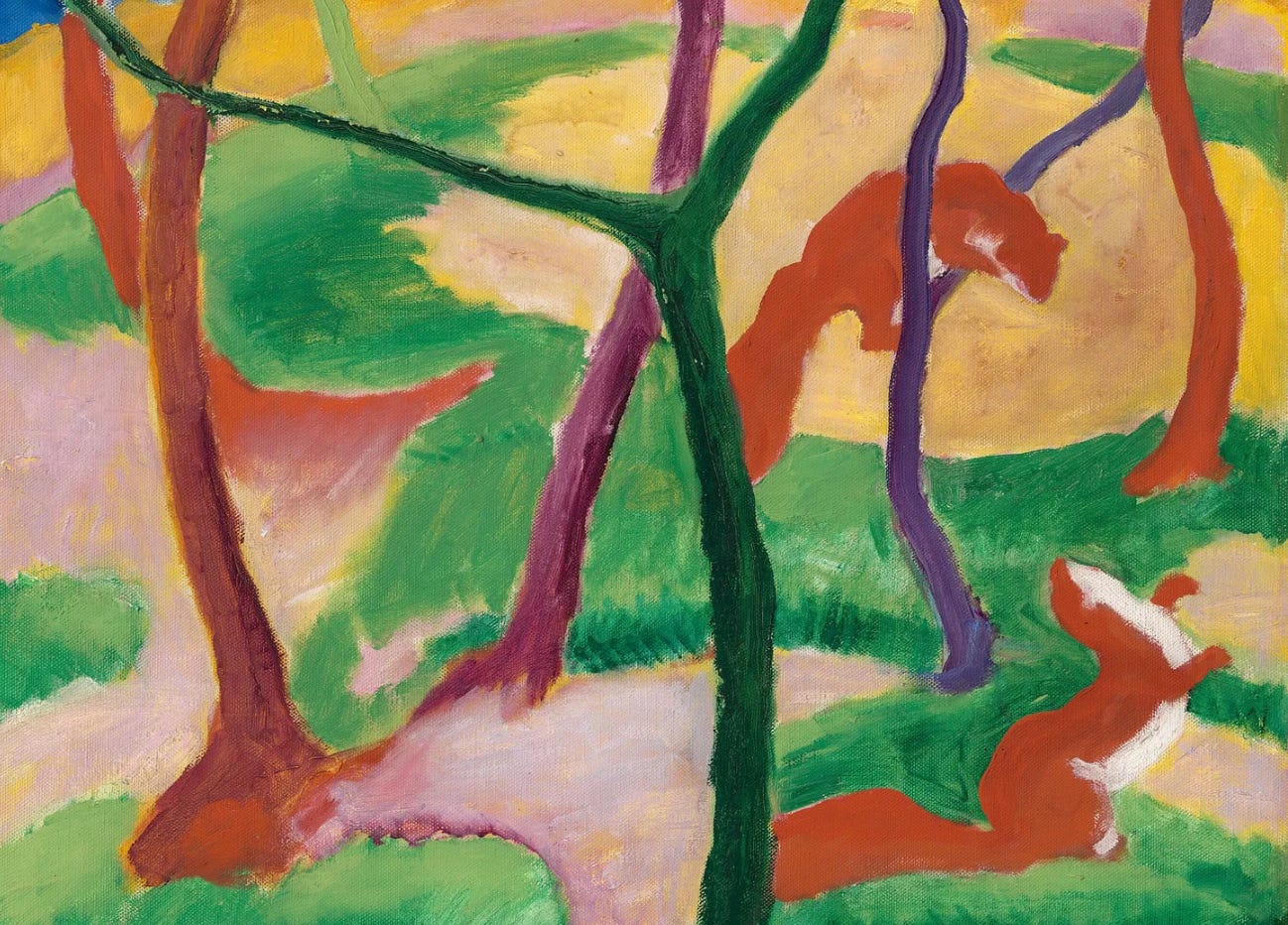
Franz Marc (1880 - 1916) had great love for animals.
“How does a horse see the world, or an eagle, or a doe, or a dog?” he wondered, according to an English translation of a passage he wrote in his native German.
"How wretched and how soulless is our convention of placing animals in a landscape that belongs to our eyes, instead of sinking ourselves in the soul of the animal in order to imagine his perceptions,” Marc wrote.
How lovely is that idea, “sinking ourselves in the soul of the animal in order to imagine his perceptions.”
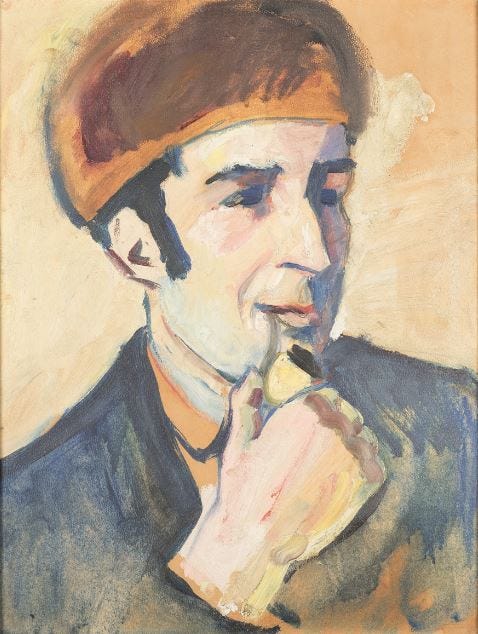
Marc was part of the Der Blaue Reiter group that also included artist Vassily Kandinsky. Painters in the group sought to convey spiritual and emotional messages through color.
The Der Blaue Reiter group drew inspiration as well from the work of painters known as Fauves, or wild beasts in French. Around 1904, the Fauves embraced bold and exaggerated colors. You can see this in the painting below by the Fauve André Derain.
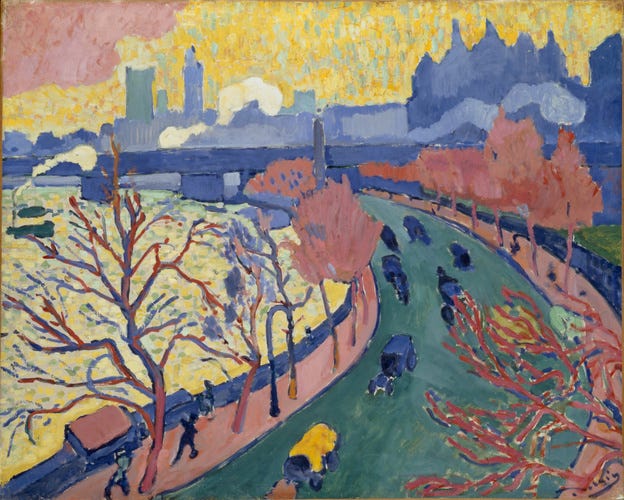
Marc uses this kind of bold colors for the background of his 1911 painting of weasels.
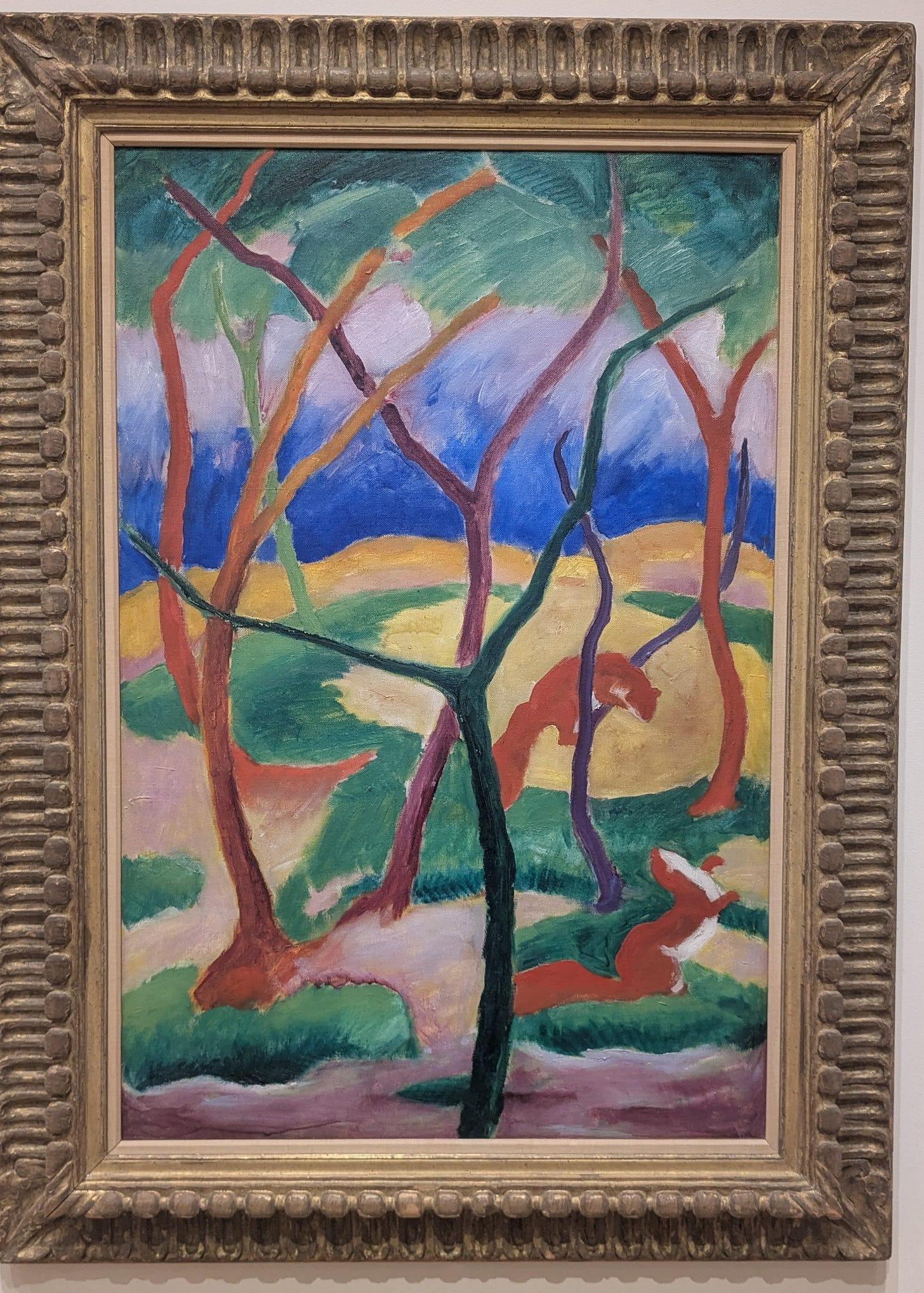
It’s a treat to take a few minutes and stand before this painting, first contemplating the playful creatures.
Then you can study the lines of the trees and the colors Marc used in this painting.
“..hallucinogenic, ultra-modern Garden of Eden”
Marc had a short career as a painter, lasting about 14 years.
So D.C. folks have great luck at this time to have two of his masterpieces now on view.
In addition his “Weasels at Play” at the National Gallery of Art, we can see Marc’s 1913 painting titled “Deer in the Forest I” at the Phillips Collection.
This painting is at once busy and tranquil. It holds your attention, but, in my opinion, does so without sparking anxiety.
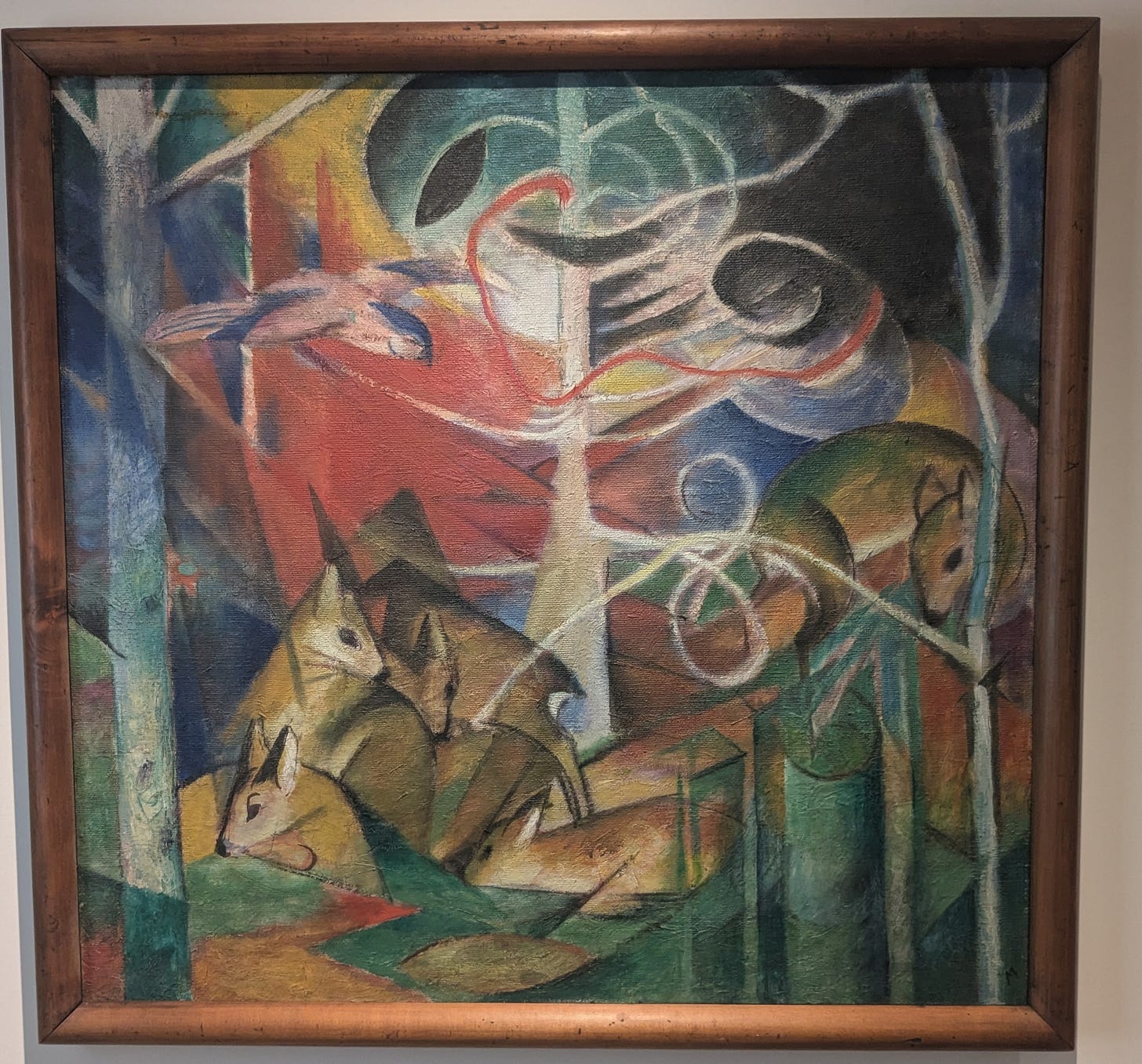
You see a brightly colored bird swooping into the painting and a swirling patch of darkness.
But the deer don’t seem bothered.
This one seems to be daydreaming.
You may wonder what these deer have on their minds.
That seems to be what Marc intended. In describing this painting, the Phillips Collection attributes the following quote to Marc:
“I can paint a picture: ‘The Deer,’ … However, I may also wish to paint a picture ‘The Deer Feels.’ How infinitely more delicate the artist’s sensibilities must be to paint that!”
This painting also reflects changes in Marc’s work following his 1912 visit with French painter Robert Delaunay. Delaunay embraced colorful abstraction, according to a 2022 article from the auction house Christie’s.
“Marc’s palette became more vibrant and his backgrounds more fragmented, so that his depictions of animals seemed to melt into form and colour, like a hallucinogenic, ultra-modern Garden of Eden,” the Christie’s article said.
Sources: “The mystical Modernism of Franz Marc, whose art was a ‘bridge into the spirit world’,” Christies, 2022. I highly recommend checking out the embedded video.
I found the first quote from Marc used in this essay in Elizabeth Payne’s 1956 article in the Bulletin of the Detroit Institute of Arts, “Animals in a Landscape by Franz Marc,” I accessed this article via JSTOR.
Project Gutenberg posted a copy of the book of Marc’s writing online. I don’t read German, but I checked the relevant passage via Google Translate. That result was very similar to what appears in Payne’s article, giving me confidence to use that nice quote with a little tweaking.
“Deer in the Forest I,” The Phillips Collection | Franz Marc, Museum of Modern Art website
For more on Marc, read Wild Creatures Caught on Canvas. For more on Delaunay, read Colorful Painter Who Traveled in Good Company. Let me know if you need a link for these articles.







